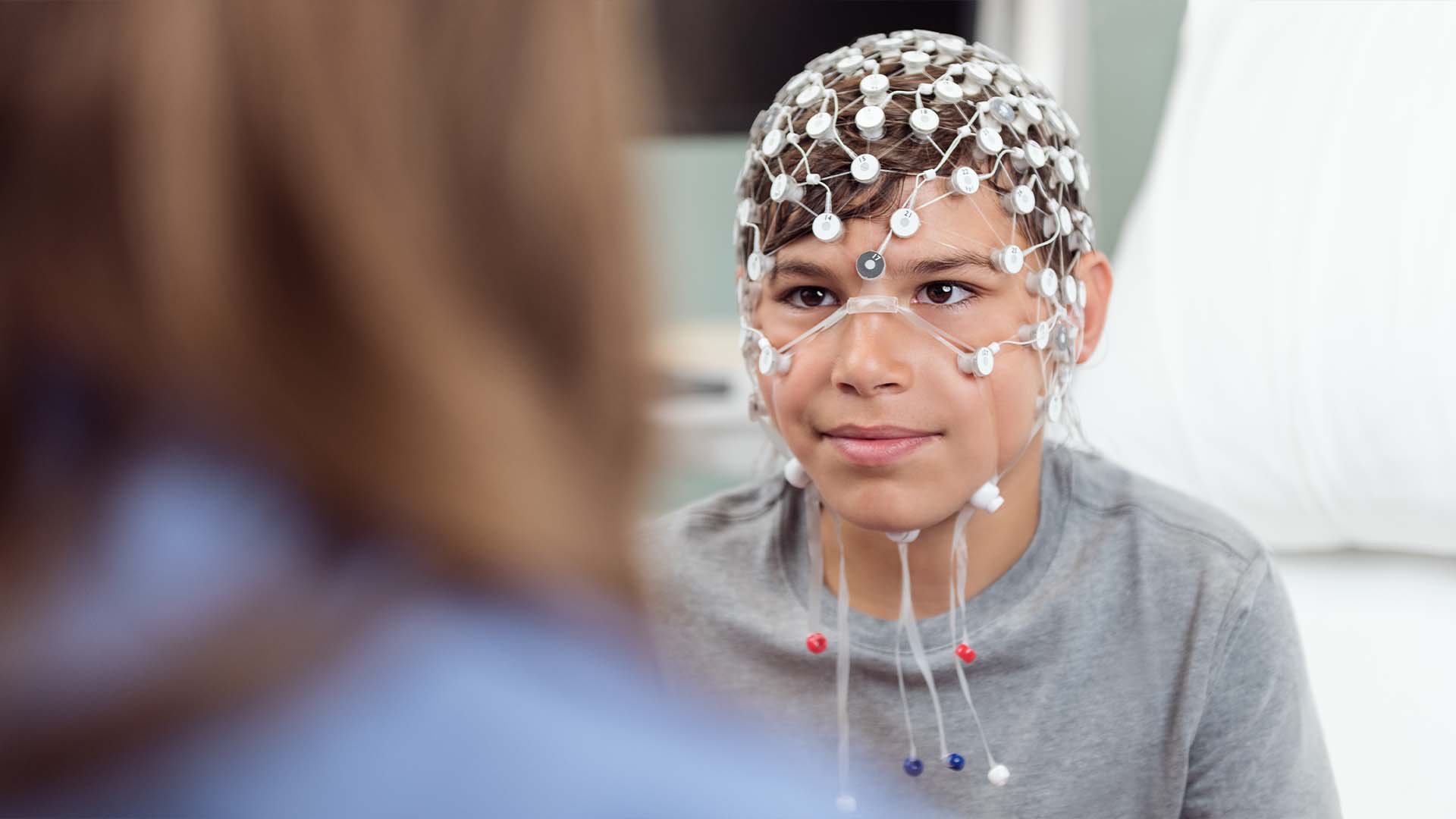
EEG for Patients
Recording the changes in the brain’s natural electrical activity is a well-established way of diagnosing neurological disease and monitoring the progress of treatment. The electroencephalograph, (commonly referred to as EEG) has been a key noninvasive tool in medicine since the 1920’s when it was first described in humans by Dr. Hans Berger.
In today’s medicine, the EEG is commonly used to diagnose seizure disorders (such as epilepsy), assess neurological injury, plan surgery, assess brain integrity following injury or stroke, and assess sleep problems. Typically, EEGs are performed by neurologists at the request of the patient’s personal physician or pediatrician. EEGs can be performed on an outpatient basis in a neurologist’s office or at an EEG clinic, or in an inpatient hospital setting. Routine EEGs typically involve recording times between 20 to 40 minutes. Longer recordings are done for diagnosing sleep disorders or for planning neurological surgery.
Introducing Magstim EGI
EGI’s line of digital EEG systems provides two key innovations that improve patient comfort and diagnostic yield. EGI’s Geodesic EEG Systems are painless because they use the HydroCel™ Geodesic Sensor Net (known as the “Net”), which is an innovative technology that allows EEG electrodes to be applied quickly and without painful scalp abrasion. The result of using EGI’s Net is increased patient comfort and reduced overall procedure time. Even children—who usually resist the “scrape and paste” technique that traditional methods use to apply EEG electrodes—find that the EGI Net makes having an EEG much easier to take, and some find it to be almost fun.
Learn More About EEG
The billions of nerve cells in your brain produce very small electrical signals that form patterns called brain waves. During an EEG test, the sensors detect your brain waves and the signals are recorded on a computer.
The brain will show different patterns in the EEG depending on how it is functioning. There are typical patterns for each individual patient at different developmental stages and levels of alertness at the time of the screening. When the EEG signal shows a pattern that is not typical, this information can help guide diagnosis or treatment options.
An EEG technologist can perform the screening in a doctor’s office, a specially designed clinic, or in a hospital. EEG is also commonly used with patient populations (people with specific conditions) as part of academic or pharmaceutical research. In these cases, a trained member of a research team may run the EEG session.
On the day of your appointment, you need to have:
- Clean, dry hair with no products like gel or oil
- A hair style that provides access to most of the skin on your head
- No makeup on the face
- No earrings or other jewelry, if possible
- Any products you may need to style your hair back to normal after the EEG is complete
Your doctor may have additional instructions to help prepare for your appointment.
Discuss your next steps with your healthcare provider.
Electrical stimulation is similar to an EEG session in that some preparation will ensure a better experience. On the day of your appointment, you need to have:
- Clean, dry hair with no products like gel or oil
- A hair style that provides access to most of the skin on your head
- No makeup on the face
- No earrings or other jewelry, if possible
- Any products you may need to style your hair back to normal after the EEG is complete
Depending on the type and intensity of the electrical stimulation you will receive, you may feel little to no sensation from the stimulation. The most commonly reported sensations are tingling or visual sensations, particularly when stimulation occurs near the eyes or on skin where there is no hair.



